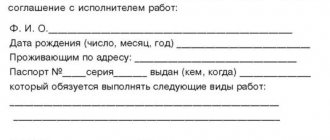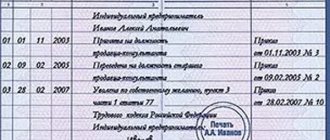A signature authenticates a document and makes it valid. An incorrect signature can lead to a challenge in court and cause many other troubles. Entrepreneurs should know the basic rules for document approval in order to avoid getting into unpleasant situations when a document may be declared unenforceable.
- Who has the right to sign important documentation, and can this right be delegated to others?
- How to place your signature in accordance with the rules of office work?
- What if several people must sign at once?
Who has signing authority?
Who has the right to sign a particular document must be clearly stated in the relevant regulations, which may include:
- constituent documents of the organization;
- job description;
- local regulations;
- order;
- order;
- power of attorney.
The absolute right to sign (without a power of attorney or other special justification) belongs to the manager, that is, the director or chairman of the board. Its data must be contained in the state register (Unified State Register of Legal Entities or Unified State Register of Individual Entrepreneurs).
IMPORTANT INFORMATION! If, when registering an enterprise, the manager gives the right to sign without a power of attorney along with himself to another person or persons, this information is also entered into the register.
Signature by proxy
A power of attorney is a written document that delegates certain powers. In our case, this is the transfer of the right to sign. Such a power of attorney for the right to sign can only be issued by a person who has this right unconditionally according to the constituent data, that is, most often, a representative of the management.
The format of the power of attorney and the format of the document being signed must match. For example, if a transaction that requires notarization is signed under a power of attorney, then the power of attorney must also be notarized.
If you strictly follow the rules, then the document must contain an indication of the signatory’s right to act on behalf of the organization: a signature based on the constituent documents, an order or instruction from management, a power of attorney.
NOTE! If a power of attorney is issued on behalf of a legal entity, then it must be issued by the director or another person specified in the constituent documents.
Can the general director write a statement for himself?
Important
Responsibility for the right to sign The person authorized to sign must remember that he is personally responsible for signing documents. If he signs documents that indicate illegal actions, then various types of sanctions, including criminal ones, may be applied to him.
This should be understood when signing contracts for large sums of money.
But the head of an organization also bears a risk when assigning powers to a particular person. If he was absent for a month, and during this time many documents were signed.
If difficulties arise in the future with the fulfillment of the obligations assumed, the manager himself will be responsible. Info
If you have any difficulties with drawing up an order or power of attorney, our specialists will help you understand the current situation. They will select a solution that suits you and your company.
Who should sign the document if the director is absent?
If the person with the absolute right to sign is for any reason absent from his/her workplace at the time the signature is required, this option should be provided in advance. There are several ways to resolve this situation:
- Provide in the constituent documents the possibility of signature for the deputy director or other official.
- Issue a power of attorney for signature by an authorized person (you can do this immediately for a long period, for example, for a year).
- Issue an order or instruction for the right to sign a specific document (one-time option).
- Use a facsimile version of the signature in cases where this does not contradict the law.
Signed by I.O.
If the document is signed by the acting director or his deputy, the right to sign is delegated to him on the basis of the above documents. At the same time, there is no need to indicate “acting” in the signature itself; according to GOST rules, only the name of the position is required, which for the employee who temporarily assumed management responsibilities remained the same. This must be indicated when the document is endorsed. It is also unacceptable to use a slash and the use of the preposition “for” before the signature.
IMPORTANT INFORMATION! Documents signed by the acting official in violation of the design of this detail (with the letters “i.o”, slash or preposition “for”) cannot be notarized, they can be challenged in court.
In the place of the director - the signature of the acting director
If on the form the position of director is in the place intended for signature, and the person signing is acting, then you need to cross out the printed phrase and enter the name of the real position of the signatory. The same should be done if the surname and initials of the absent manager are printed. Corrections are made in handwritten form.
What cannot be a facsimile?
An imprint of a sample signature, which is so easy to give to any employee and therefore very convenient to use, cannot be left on all documents. Legal grounds prohibit placing such a signature, which does not require the “live” participation of an authorized person, on the following documents:
- related to bank payments;
- various statements;
- personnel papers;
- declarations;
- invoices;
- cash documents;
- contracts that need to be registered;
- powers of attorney.
You can leave a facsimile signature when exchanging documents within the framework of one contract if:
- a contract signed in the usual way provides for this possibility;
- There is an agreement between the partners on the use of facsimile clichés.
Such papers can be commercial offers, letters, acts, specifications, etc.
Founder and director in one person: how to pay salaries and is it necessary to conclude an agreement?
The situation when the CEO and founder are the same person is not uncommon. This is not prohibited by law: one person can establish a company. How to formalize labor relations? Is it necessary to conclude an employment contract? How to pay for labor and not make mistakes with taxes?
Question from a webinar participant about cash transactions: in a company, the general director and the founder are the same person. How to conclude an employment contract. Is it mandatory for the general director to be paid and paid? Is it possible to take the CEO's salary as expenses? Should the salary be the minimum, or whatever the company can afford?
Webinars for accountants at Kontur.School: changes in legislation, features of accounting and tax accounting, reporting, salaries and personnel, cash transactions.
How is the “signature” requisite completed?
It would seem that what could be simpler - to put your signature? Meanwhile, this is as serious a requisite as the name of the organization and its banking attributes. Therefore, the correctness of its execution must coincide with the requirements for office work.
Signature elements
The signature as a prop consists of three parts.
- The title of the position must be indicated in full in accordance with the staffing table. If the signature is not on official letterhead, then the name of the organization must be added to the title of the position. It is written with a capital letter. This element is located on the left edge of the document.
- A personal signature is what is commonly called a painting. There are no special requirements for it: it can be either a stroke or a surname with one or more initials. According to unspoken rules, at least one letter from the first name and three from the surname must be clear from the stroke.
- Deciphering the signature – initials and surname. It must completely match the passport data, down to the dots in the letter e, if they are present on the identity card. Placed at the level of the last line of the signature.
Signature location
The signature is inseparable from the text of the document. If the text ends at the bottom of the page, then the signature cannot be transferred to a separate sheet if there is no other text on the sheet besides it. It is customary to move at least the last paragraph, but do not forget about the correct page numbering.
If several signatures are provided, then they are located one below the other in descending order of the nomenclature importance of the positions.
FOR YOUR INFORMATION! If members of the commission sign, then it is necessary to indicate not their actual positions, but their role in the commission (“Chairman”, “Member of the commission”). But they need to be arranged in order of subordination.
IOF or Full Name?
The order of placement of initials - before or after the surname - is determined by Decree of the State Standard of the Russian Federation dated 03.03.2003 N 65-st and the Unified System of Organizational and Administrative Documentation “Requirements for the preparation of documents. GOST R 6.30-2003".
According to these regulations, initials are placed after the surname in the following cases:
- when addressing a document to an individual (for example, A.P. Koroleva);
- when declaring or imposing a resolution when specifying the executor (for example, “The order is entrusted to I.I. Romanov”).
If the signature is a requisite, then the initials are placed before the surname . There is a dot after the initials; they are not separated from the surname by a space.
Stamp on signature
The use of a seal is not mandatory for some forms of business activity, for example, for individual entrepreneurs. But for most documents, the presence of a seal will certify their authenticity. Its use is subject to mandatory requirements that must be observed.
- A seal cannot be placed before a signature, especially on a blank sheet of paper.
- If the document is drawn up on a special form, then the seal is placed in the place provided for this purpose, imprinted with the letters M.P. (“place of printing”).
- In other cases, the seal is placed next to the signature; it is allowed (but not required) to overlap part of the personal signature with the edge of the seal. The stroke cannot be completely covered up, since its authenticity must be verifiable.
Law Club Conference
I completely agree with the sound of the classics in your arrangement (and, by the way, it can be performed not only on the “Only Participant” cello, but also on the “General Director” double bass). But the libretto needs to be supplemented with interlinear interpretation - from that same paragraph 6 of the Info letter of the Presidium of the Supreme Arbitration Court No. 57 dated 10/23/2000.
6. When considering cases, it should be borne in mind that the court cannot, on the basis of paragraph 1 of Article 183 of the Civil Code of the Russian Federation, recognize a representative as a party to an agreement concluded to amend or supplement the main agreement. Such an agreement is considered void (Article 168 of the Civil Code of the Russian Federation) , since by its nature it is an integral part of the said agreement and cannot exist and be executed separately from it.
Recommendations for signatories
- Check your counterparty's signature credentials, especially if this is your first experience of written cooperation.
- Check not only the identity of the signatory and the authenticity of the authorizing document, but also its validity period.
- If a document consists of several pages, then each sheet should be signed, and not just the end of the document. You can flash the document and sign each place of the firmware.
- The constituent documents must provide for the procedure for notifying partners about the transfer of signing authority by management to other persons.
The manager signed documents during illness
But at the same time, one should also be guided by the norms of civil legislation, which does not provide for the application of labor law norms to civil legal relations. In particular, the provisions of the Civil Code of the Russian Federation do not provide that the powers of a manager are terminated for the duration of his illness. Consequently, the signing of documents by the head of an organization during his temporary incapacity for work does not entail the recognition of such a transaction as invalid, since the head by such actions does not go beyond the scope of his powers (Article 174 of the Civil Code of the Russian Federation).
But it is entirely possible for the Russian Federal Social Insurance Fund not to partially accept the amount of paid temporary disability benefits as credit. As established in clause 1, part 1, art. 8 of Law No. 255-FZ, violation by the insured person without good reason during the period of temporary disability of the regime prescribed by the attending physician is one of the grounds for reducing the amount of temporary disability benefits. If there is the specified basis for reducing the temporary disability benefit, it is paid to the insured person in an amount not exceeding for a full calendar month the minimum wage established by federal law from the day the violation was committed (Part 2 of Article 8 of Law No. 255- Federal Law).









